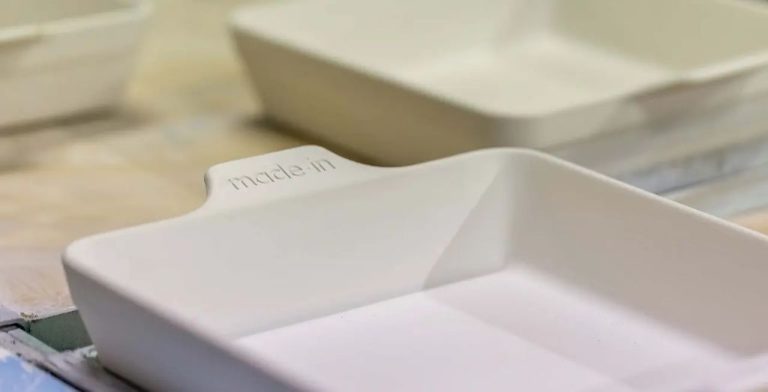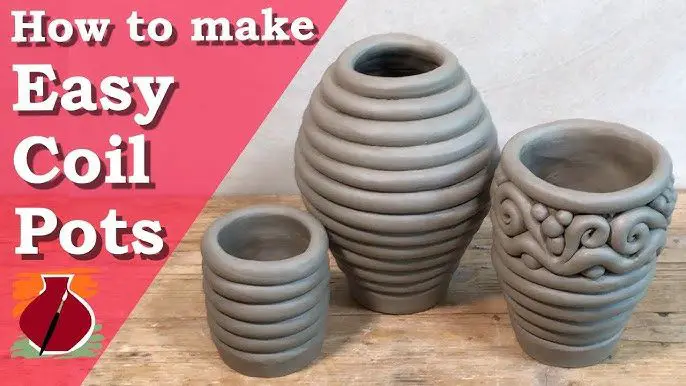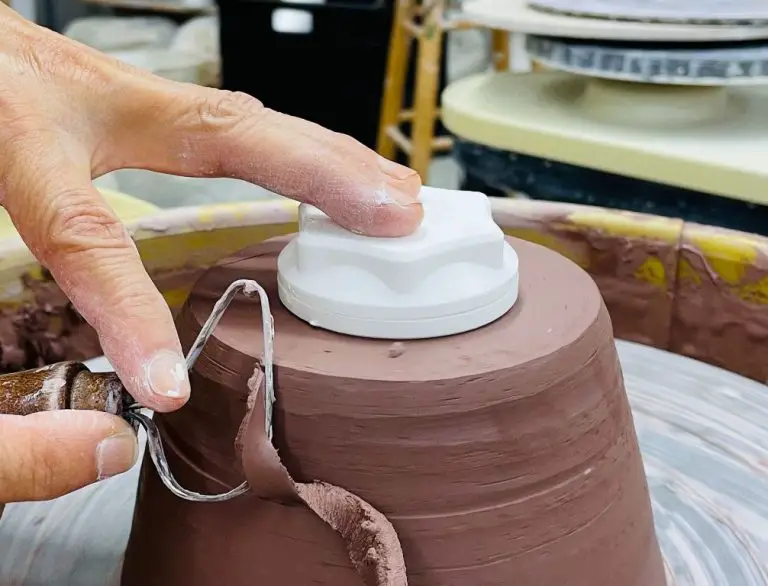Why Won’T My Clay Stick Together?
Making clay projects can be a relaxing and rewarding hobby. However, it can quickly turn frustrating when your clay won’t properly stick together. Whether you’re sculpting, making jewelry, or crafting with polymer clay, having clay that falls apart makes it nearly impossible to complete your creation.
There are several possible reasons clay might not stick. The most common causes include insufficient moisture, old or expired clay, incorrect clay type, contaminants, poor storage, lack of clay additives, and improper kneading technique. With some troubleshooting, you can likely get your clay sticking again and continue your project.
This article explores the top reasons clay loses stickiness and cohesion. We’ll provide tips to identify the cause and restore your clay’s bonding ability. With the right knowledge and techniques, you can get your clay back on track.
Moisture Content
One of the most common reasons clay lacks stickiness or cohesion is an improper moisture content. Clay is hygroscopic, meaning it readily absorbs and releases water. The right amount of moisture is what enables clay particles to stick together when pressed or squeezed. Too much water, and the clay will become slippery and lack shape. Too little, and the clay will crumble apart when you try to form it.
Each type of clay requires a specific moisture content range to be workable. An ideal starting point is adding about 5-10% water by weight. For example, for 1 pound of clay add 2-3 tablespoons of water. However, the optimum amount can vary based on factors like clay composition, environment, storage method, and kneading techniques.
Test the clay’s consistency and adjust moisture levels accordingly. If too dry, add water in small increments. If too wet, let it air dry somewhat or knead it firmly to press out excess moisture. Getting the moisture content right may require some trial and error. But with practice, you’ll learn how your particular clay responds and the ideal consistency for your projects.
Old or Expired Clay
One of the most common reasons clay won’t stick together properly is that it has simply dried out and aged over time. Clay is hygroscopic, meaning it naturally absorbs moisture from the air when fresh. But as clay sits unused, it will slowly dry up as the moisture evaporates. The longer clay sits around unused, the drier and less sticky it tends to become.
Over time, this moisture loss causes the clay particles to separate from each other more easily. When clay dries out, it loses its plasticity and malleability. Trying to condition and use old, hardened clay can be frustrating if it crumbles apart rather than sticking together.
You may notice dry, aged clay is more brittle and prone to cracking and flaking when worked. The clay also takes more effort to roll, cut, and shape without sticking together well. Old clay sometimes feels sandy or grainy compared to fresh, moist clay. It helps to store clay properly sealed to retain moisture and prevent drying out. But even then, opened clay will slowly dry up over months to years.
So if your clay is very old, dried out, or seems hardened, brittle, and unworkable, it could simply be expired. Trying to reconstitute very old clay often takes considerable effort. At some point it may be unusable. Using fresh, moist clay generally provides the best experience and results.
Wrong Type of Clay
Different clays have different properties and some are better suited for sculpting than others. Clays like polymer clay or oil-based clays are often easier to work with because they are very soft and malleable right out of the package. However, natural clays like terracotta or earthenware clays tend to be quite stiff and require more conditioning before they become workable.
If you are trying to sculpt with an extremely stiff natural clay, it may resist sticking together into a cohesive mass no matter how much you try to knead it. This is because stiff clays have a very high clay content and low plasticity. They lack the bendable, binding properties needed for sculpting intricate shapes.
Before blaming your technique, check to make sure you are using a clay that is specifically formulated for sculpting and modeling. Clays marketed for pottery or ceramics may not be suitable for sculpting thinner walled pieces or detailed shapes. The label should indicate if the clay is meant for modeling, sculpting, or hand-building.
If the clay is very stiff right out of the package, you may have better results switching to a softer, more pliable polymer clay. Or consider buying a natural clay blend formulated for sculpture. These have ingredients added to improve plasticity and cohesion for modeling.
Contaminants
Getting contaminants like grease, dirt, oils, lotions, or food particles on clay can prevent it from sticking together properly. These contaminants create a barrier between clay particles, making it difficult for the clay to bond.
Always make sure your hands are clean before handling clay. Avoid touching clay after applying lotions or oils. Work on a clean, dry surface when conditioning clay. If clay feels oily or gritty, it likely has contaminants mixed in.
To remove contaminants, knead a small amount of clay until pliable and fold it over onto itself repeatedly. This helps absorb impurities into the clay. You can also try washing clay in water to dissolve contaminants. Let clay dry fully before using. Proper cleaning and careful handling helps prevent contaminants from ruining clay workability.
Improper Storage
Storing clay improperly can affect its stickiness and workability. Here are a few storage mistakes that can lead to clay not sticking together well:
- Exposing clay to extreme temperatures – Very cold or very hot temperatures can alter clay’s moisture content. Store clay in a climate-controlled space between 60-80°F.
- Allowing clay to freeze – If water in the clay freezes and expands, it can disrupt the clay’s structure. Never allow clay to freeze.
- Storing clay in air-tight packaging – Clay needs some exposure to air to maintain proper moisture levels. Don’t seal clay in air-tight bags or containers long-term.
- Leaving clay uncovered – Uncovered clay will dry out too quickly. Always store clay in an airtight bag or container.
- Exposing clay to direct sunlight – Sunlight can dry clay out. Keep clay stored away from direct light.
Following proper storage methods will help maintain the moisture content and stickiness of clay. If you’ve ruled out other factors, improper storage could be why your clay won’t stick together.
Clay Additives
Some additives can reduce the stickiness and improve the workability of polymer clay. Additives like liquid polymer clay, mineral oil, cornstarch, and talcum powder are commonly used to help clay become less tacky and easier to condition.
Liquid polymer clay is a pourable liquid that can be mixed directly into solid clay. It acts as a plasticizer to soften the clay and make it smoother and more pliable. Start with 1-2 drops per ounce of clay and knead it in thoroughly.
A small amount of mineral oil, baby oil or other odorless oil can also help lubricate clay and prevent sticking. Just a drop or two kneaded into the clay should do the trick. Too much oil can leach out over time and leave an oily residue on the clay surface.
Cornstarch and talcum powder are superfine dry powders that can be dusted onto sticky clay. Use a light touch, as too much powder will make the clay gritty. Fold and knead gently to distribute it evenly. The powders fill in microscopic pores in the clay to help it release easily.
Kneading Method
The way you knead clay can significantly impact how well it holds together. Kneading helps distribute moisture evenly and develops the elasticity in the clay that allows it to bond. Here are some kneading techniques to try if your clay won’t stick together:
- Use firm, even pressure as you knead – don’t be too gentle or tentative. Applying force helps blend the moisture and conditioning additives throughout the clay.
- Knead for at least 5-10 minutes. It takes time for additives to be absorbed and for the clay particles to align. Be patient and keep kneading until the clay feels smooth and elastic.
- Add water or oil a little at a time if the clay is crumbly. Spritz water from a spray bottle or add oil drops while kneading to reach the ideal consistency.
- Avoid over-kneading. This can introduce too many air bubbles and make the clay brittle. Stop kneading once the clay is smooth, pliable, and sticks together well.
Try adjusting your kneading technique if your clay still won’t bind after conditioning additives. The right amount of pressure and time makes all the difference.
Troubleshooting
If you are having trouble getting your clay to stick together, here are some steps you can take to improve the clay’s stickiness:
Add a few drops of water – Clay often needs a bit of moisture to properly bind together. Add water a few drops at a time, kneading it into the clay, until it reaches a smooth, pliable consistency.
Knead vigorously – The warmth and pressure of kneading helps blend the clay particles and release oils, enabling adhesion. Knead for 5-10 minutes, pressing into the clay firmly with the heels of your hands.
Let it rest – After kneading, wrap the clay in plastic and let it rest for at least 30 minutes. This allows moisture to evenly distribute through the clay.
Use clay softener – Products like olive oil, mineral oil, lemon juice or glycerin can increase clay pliability. Mix a few drops into the clay while kneading.
Avoid over-working – Excessive kneading can make clay crumbly. Fold and press the clay instead of continuously kneading.
Try a fresh batch – Old, dried out clay may never revive. Starting fresh with a new moist batch of clay often solves stickiness problems.
When to Get Help
If you’ve tried troubleshooting and optimizing the moisture content, kneading technique, and storage of your clay, but it still refuses to properly stick together, it may be time to get help or replace the clay entirely.
Signs that the clay may need to be replaced include:
-
Cracks or dry chunks no matter how much water you add
-
An extremely greasy or sticky texture that never firms up
-
Foul odors
-
Mold growth
-
Discoloration or unnatural hues
-
Grittiness from contaminants that can’t be kneaded out
-
Inability to form basic shapes without frequent cracking or crumbling
If you notice any of these issues, the clay has likely expired or become contaminated. Purchase fresh clay from an art supply store and properly store it to avoid these adhesion issues in the future.



